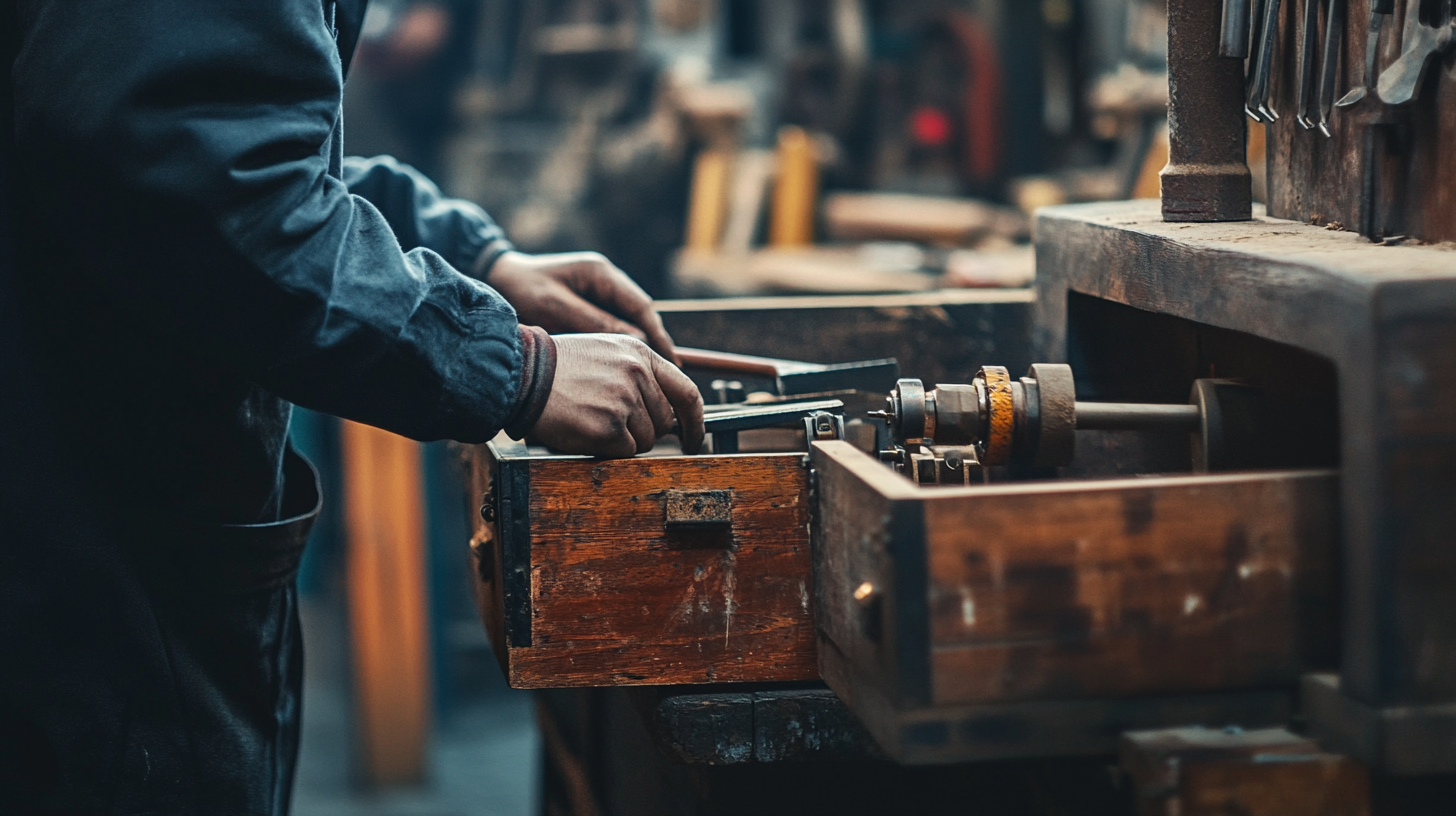In an era marked by escalating trade tensions between the United States and China, many industries are feeling the pressure of tariffs and shifting economic policies. However, amidst these challenges, Chinese tool chest manufacturers have managed to not only survive but thrive, showcasing resilience and adaptability in a competitive landscape. "Tool chests," essential for both professional and DIY enthusiasts, have become a focal point of this enduring success. By leveraging advanced manufacturing techniques, strategic partnerships, and a keen understanding of international markets, these manufacturers are navigating the complexities of tariffs while maintaining high-quality production standards and affordability. As we explore the landscape of tool chest manufacturing, we will uncover the innovative strategies that have enabled these companies to flourish despite the turbulent trade environment, providing insights into their growth trajectories and the future of the industry.

In the face of rising tariffs and heightened trade tensions between the US and China, Chinese tool chest manufacturers have developed innovative strategies to remain competitive. One of the primary approaches involves diversifying their supply chains. By sourcing materials from countries outside of the United States, manufacturers can mitigate the financial impact of tariffs. This not only helps in reducing costs but also allows them to maintain consistent production schedules without significant disruptions.
Additionally, many manufacturers are focusing on enhancing product quality and innovation. By investing in advanced technologies and improving their product offerings, they can justify premium pricing, which helps offset any tariff-related price increases. Marketing campaigns that emphasize the superior craftsmanship and durability of their tool chests further strengthen their appeal in the American market. This dual strategy of optimizing supply chains while upgrading product quality enables Chinese manufacturers to navigate the complexities of tariffs effectively, positioning themselves for sustained growth despite external pressures.
The ongoing US-China trade tensions have dramatically reshaped global supply chains, particularly affecting industries reliant on manufacturing in China. According to a report by the Boston Consulting Group, nearly 87% of companies are reconsidering their supply chain strategies due to tariffs and trade barriers, with many looking to diversify their sources to mitigate risks. This shift has led to increased operational costs and delays, pushing companies to reevaluate their dependencies on traditional manufacturing hubs.
Chinese tool chest manufacturers, however, have found ways to thrive amidst these challenges. As tariffs on Chinese goods continue to impact US markets, many of these manufacturers have started to implement innovative strategies focused on enhancing product value and efficiency. A survey by Deloitte indicates that 61% of manufacturing firms are investing in automation and advanced manufacturing technologies to stay competitive. By transitioning to smarter production processes, these companies not only reduce costs but also attract customers looking for high-quality products despite inflated pricing driven by tariffs. This resilience underscores the adaptability of Chinese manufacturers, even in a climate of uncertainty.

Chinese tool chest manufacturers are finding innovative ways to navigate the turbulent waters of US-China trade tensions. Faced with increasing tariffs and competition, these manufacturers have adopted a multi-faceted approach to remain competitive in the global market. One of the key strategies has been the investment in advanced manufacturing technologies, such as automation and robotics. By streamlining production processes, manufacturers not only reduce costs but also enhance product quality, allowing them to meet diverse customer demands effectively.
Additionally, Chinese manufacturers are focusing on building strong partnerships both domestically and internationally. Collaborating with suppliers, research institutions, and even competitors enables them to pool resources and share knowledge, which fosters innovation. Moreover, they are expanding their branding efforts to highlight the quality and value of their products, effectively countering negative perceptions associated with "Made in China." By adopting these innovative approaches, Chinese tool chest manufacturers are not just surviving amidst trade tensions; they are thriving and setting new benchmarks in the industry.
This chart illustrates the export value of Chinese tool chest manufacturers to the US over the last five years amidst ongoing trade tensions and tariffs. The data highlights the resilience and innovative approaches taken by these manufacturers to remain competitive.
As US-China trade tensions continue, Chinese tool chest manufacturers are adapting by diversifying their markets beyond the United States. According to the latest industry reports, over 35% of manufacturers have shifted their focus toward emerging markets in Southeast Asia and Africa, where demand for high-quality tool storage solutions is on the rise. This strategic transition not only mitigates the risks associated with tariffs but also opens up new revenue streams, showcasing resilience and innovation.
**Tip:** Manufacturers looking to enter new markets should conduct thorough market research to identify local preferences and demands. Tailoring products to meet regional specifications can significantly enhance market penetration efforts.
Furthermore, partnerships and collaborations with local distributors can aid in navigating regulatory hurdles and understanding consumer behavior. Recent data indicates that manufacturers who established strong local ties reported up to 40% better sales performance in new markets compared to those who pursued a more detached approach.
**Tip:** Investing in localized marketing strategies is crucial. Leveraging social media platforms popular in target regions can help build brand awareness and engage potential customers effectively. By embracing these tactics, tool chest manufacturers can not only survive trade tensions but thrive amidst them.
| Dimension | Data |
|---|---|
| Yearly Export Growth (%) | 15% |
| Percentage of Revenue from Non-US Markets | 60% |
| Major Export Destinations | Europe, Asia, Australia |
| Tariff Impact on US Market (%) | 25% |
| Product Diversification Index | 0.75 |
In the face of escalating US-China trade tensions, Chinese tool chest manufacturers are leveraging technology to navigate tariffs and enhance their competitiveness. Technological advancements not only streamline production processes but also enable manufacturers to optimize their supply chains, ensuring timely delivery despite disrupted trade flows. By adopting automation and smart manufacturing techniques, these companies can lower costs and increase efficiency, turning potential trade barriers into opportunities for growth.
Moreover, as the global economy grapples with the repercussions of the pandemic, the significance of trade liberalization becomes increasingly evident. The revival of trade in Asia is seen as a catalyst for sustained economic recovery, suggesting that countries must prioritize policies that reduce trade barriers. Embracing technology to facilitate smoother trade processes can bolster collaboration and drive economic integration, ultimately contributing to long-term growth. As seen in recent reports from various economies, fostering a technology-driven environment could serve not only as a buffer against trade disruptions but also as a pathway to enhanced productivity and economic resilience.

